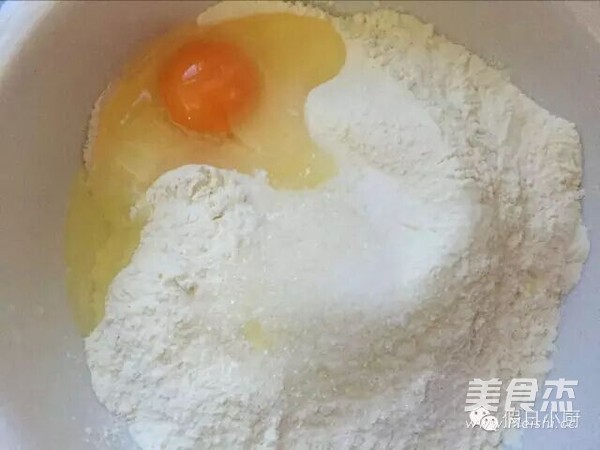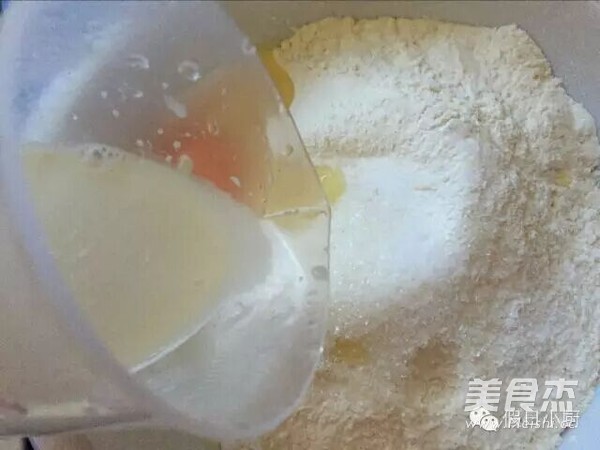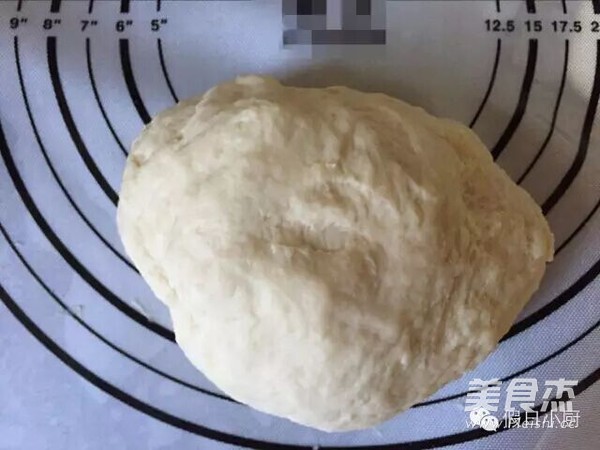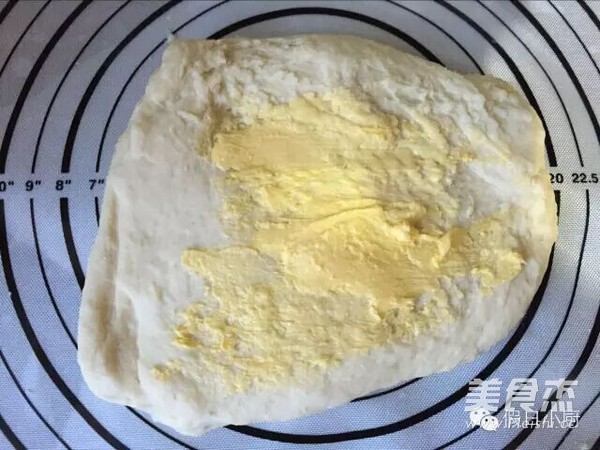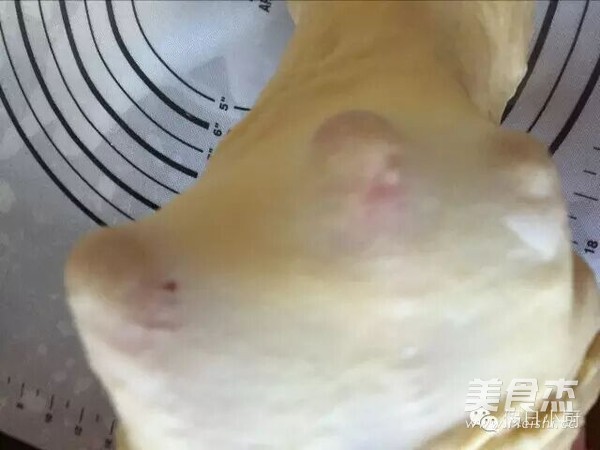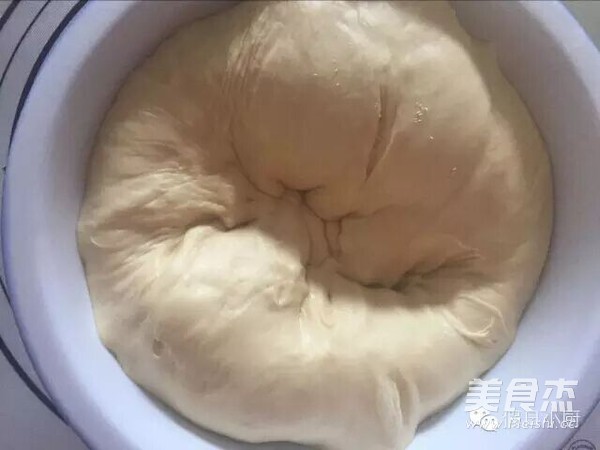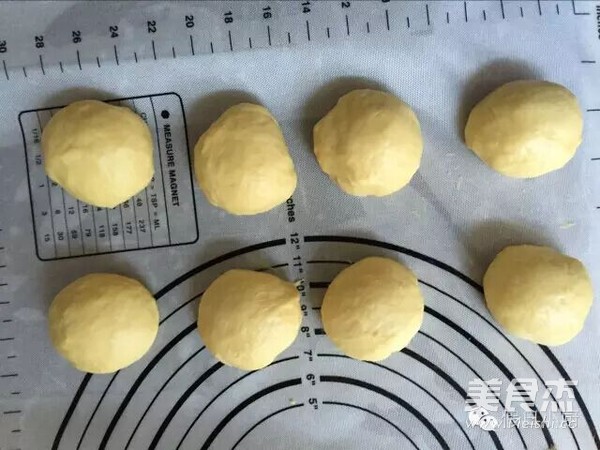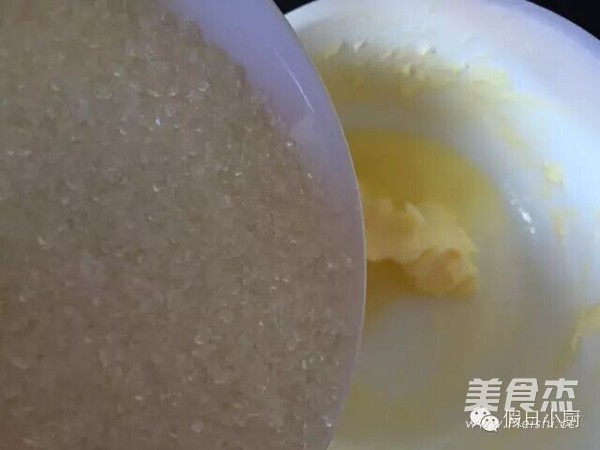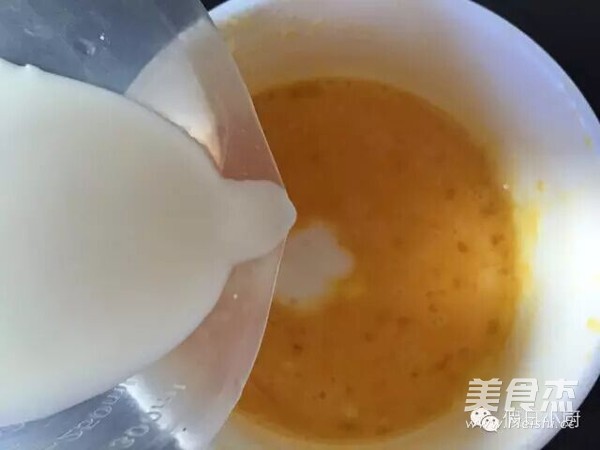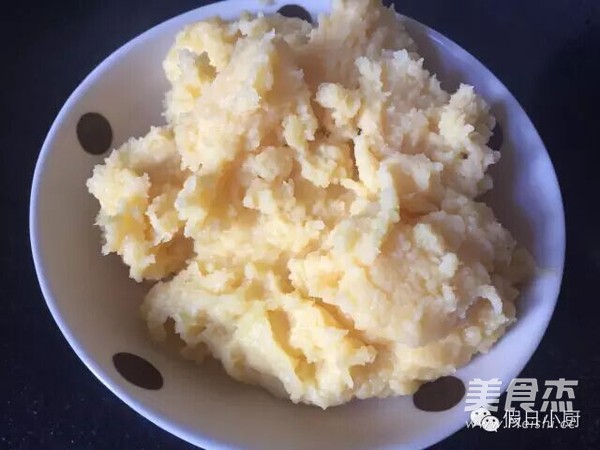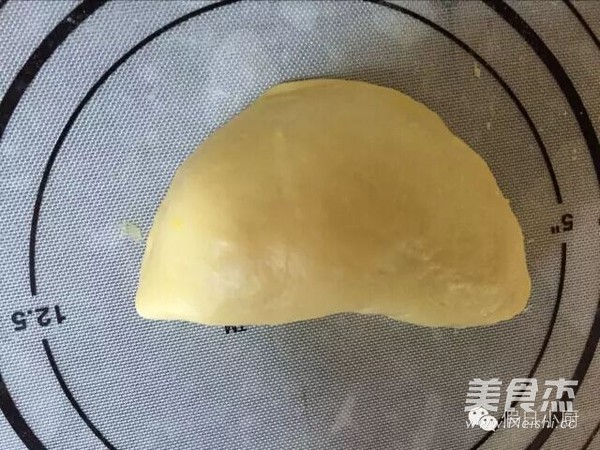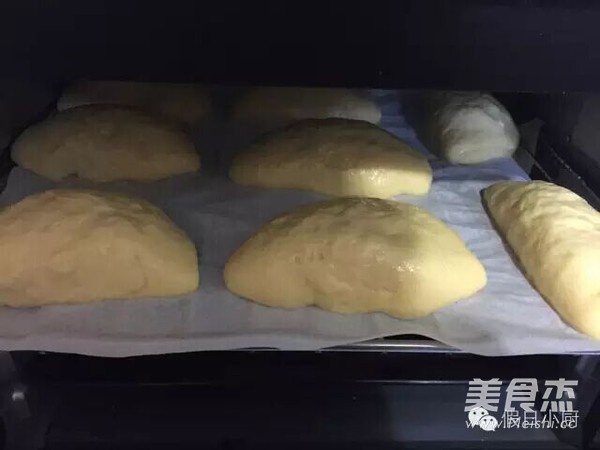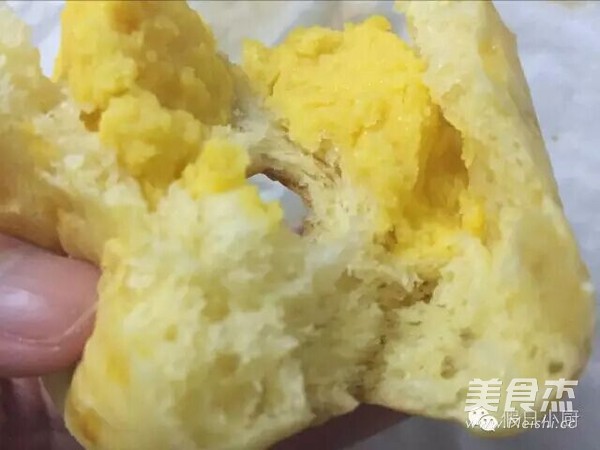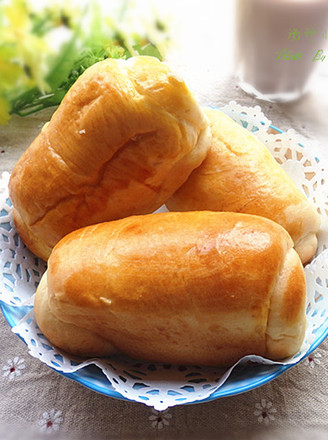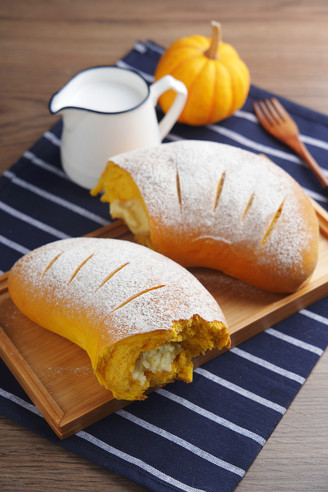Custard Bread
1.
Stir and mix the high-gluten flour, eggs, white sugar, and salt.
2.
Pour the dry yeast into about 50ml of warm water, stir well, and then pour all into the above flour. Begin to knead the dough, and at the same time slowly add a portion of the remaining warm water until it becomes a sticky dough.
3.
Transfer the dough to the kneading mat, hold down a section of the dough with your left hand, push the dough out with the base of your right palm, and then retract it to fold it. Repeat this action until the dough starts to become smooth and a layer of film can be pulled out. It takes about 10 minutes.
4.
Unfold the dough, spread 1/3 of the butter softened at room temperature evenly on the dough, fold the dough in half. Start kneading the dough continuously until the butter is completely absorbed by the dough. Repeat the same operation again until all the prepared butter is absorbed by the dough to complete this step. The state at this time is that the dough is smooth and not sticky.
5.
Then, began to beat the dough. First, hold an edge of the dough with your right hand and let it fall naturally. Then use a lot of force to beat it to the kneading mat, and repeatedly drop it several times (the dough keeps falling off, if it breaks, add more water). Repeat this until you can pull out a very thin film. It takes about 15 minutes.
6.
Place the kneaded dough in a large bowl coated with butter, cover it with plastic wrap, wrap it with a clean towel, and stuff it into a thick quilt covered by a hot water bottle. Ferment for about 2 hours. When fermenting, you can make custard fillings!
7.
After the dough has doubled its size, exhaust the air. What I use is to press the dough with my fist and knead the dough to expel the air.
8.
Evenly divide into 8 equal parts, cover with plastic wrap, and allow for 15 minutes in the middle.
9.
Make the filling: soften the butter at room temperature, add white sugar and stir evenly.
10.
Add egg liquid, milk, sieve cornstarch, and mix well.
11.
Pour the liquid into the pot, turn on a medium-low heat, and stir while boiling. You can stir slowly at first, and when the bottom of the pot is relatively sticky, stir quickly. The farther to the back, the faster the speed (the hand will be sore at the end!). Otherwise, the bottom of the pot will burn off easily.
12.
It's almost ready to be very viscous (at this time the stirring is already very laborious). Spread out the pot and let cool.
13.
Use a rolling pin to roll the small dough into an oval cake shape; wrap it in an appropriate amount of filling, and fold it into a half moon shape.
14.
For the second fermentation, it will be about 2 times as big, and it will take about 40 minutes. Spread a layer of oven paper on the oven rack and place the small dough on it. Note that there is a proper space between the small dough and the small dough. Place the baking tray on the lower level, pour hot water, and close the oven door. About 15 minutes, change the hot water to the bakeware to keep the temperature in the oven.
15.
On the dough, brush with a layer of egg liquid. Preheat the oven to 190° up and down, and bake for 15 minutes.


